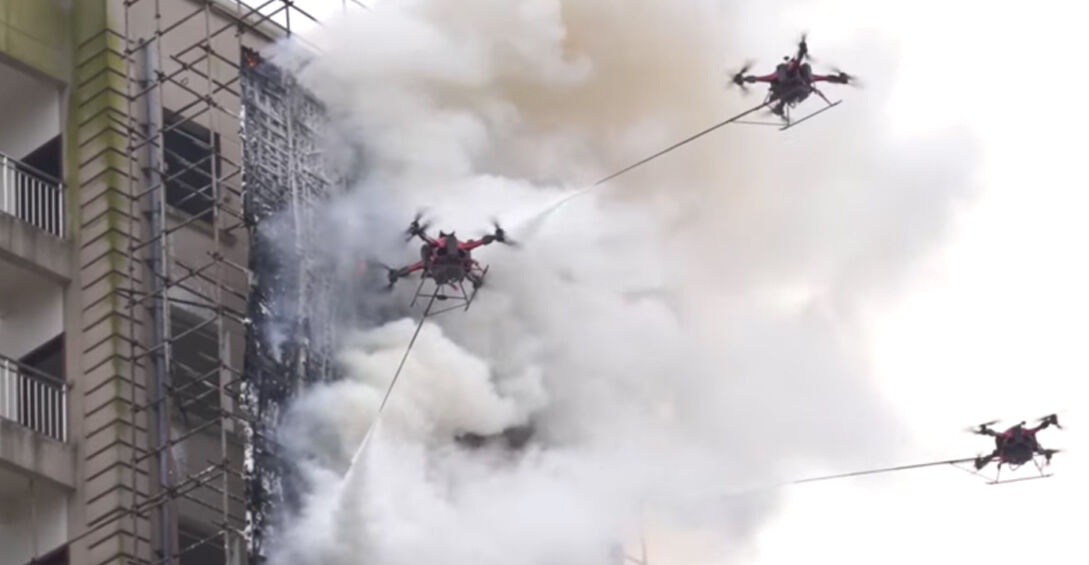Fire Suppression Drone: Revolutionizing Emergency Response

Strong 8k brings an ultra-HD IPTV experience to your living room and your pocket.
In recent years, technological innovations have introduced groundbreaking tools in disaster management. One such innovation is the fire suppression drone, an advanced aerial system designed to detect, monitor, and actively suppress fires in urban and remote areas. With growing wildfire risks and urban fire threats, fire suppression drones are becoming essential for first responders and fire departments worldwide. This article explores how these drones work, their benefits, real-life applications, and the future.
What Is a Fire Suppression Drone?
A fire suppression drone is an unmanned aerial vehicle (UAV) with sensors, cameras, and fire-extinguishing systems. Unlike traditional drones for surveillance or photography, these specialized drones are designed to directly intervene in fire emergencies. They often carry fire-retardant payloads like dry chemicals, foam, or water capsules, and can fly into areas that are too dangerous or inaccessible for human firefighters.
Some drones are designed to operate autonomously with pre-set fire response algorithms, while others are manually controlled by trained operators. Their primary objectives include early fire detection, real-time situational awareness, and on-the-spot suppression of smaller fire outbreaks.
How Fire Suppression Drones Work
The operation of a fire suppression drone involves several key components:
1. Thermal Imaging Cameras: These detect hotspots and flames in dense smoke or darkness.
2. Fire Retardant Payloads: Most fire suppression drones have tanks or capsules carrying fire-fighting agents.
3. Autonomous Navigation: GPS and AI-powered flight systems allow drones to safely navigate hazardous environments.
4. Communication Systems: Real-time data is shared with ground teams, improving coordination and decision-making.
In wildfire scenarios, drones are launched to locate fire origins and deploy retardants immediately. Drones can enter windows or upper floors for indoor or high-rise fires to suppress flames and guide evacuation efforts.
Advantages of Using Fire Suppression Drones
There are numerous benefits to integrating fire suppression drones into emergency response systems:
1. Access to Dangerous Areas
These drones can reach places where human firefighters can’t safely go, such as:
• Collapsing buildings
• Toxic smoke zones
• Remote forest areas
2. Rapid Deployment
Fire suppression drones can be airborne much faster than ground units within minutes. This speed allows them to contain small fires before they escalate.
3. Cost-Effective
Though the initial investment is significant, drones reduce long-term operational costs by minimizing equipment loss and injuries and preventing large-scale damage.
4. Enhanced Surveillance and Reporting
Using high-resolution cameras and heat sensors, drones provide real-time visual and thermal data, improving response strategies.
Use Cases of Fire Suppression Drones in Real-Life Emergencies
Several organizations and fire departments around the world have already begun deploying fire suppression drones:
• California Wildfires: During peak fire seasons, drones are used to detect and suppress small fires in rural and mountainous areas before they spread.
• Dubai Skyscraper Fires: Fire suppression drones were used to access upper floors of high-rises where fire trucks couldn’t reach quickly.
• Oil & Gas Facilities: Drones help extinguish flare-ups in dangerous industrial environments without risking human lives.
These real-life examples highlight the increasing role of drones in tackling complex fire emergencies.
Challenges in Fire Suppression Drone Technology
While promising, fire suppression drone technology still faces several challenges:
• Limited Payload Capacity: Most drones can only carry a few liters of fire-retardant fluid, making them effective mainly for small-scale fires or initial suppression.
• Battery Life: Heat, wind, and long-distance flights reduce drone efficiency and limit flight time.
• Regulatory Restrictions: In many countries, strict aviation laws hinder drone deployment, especially near urban areas or airports.
• Weather Conditions: High winds and heavy smoke can make navigation and deployment difficult.
Manufacturers are actively working to solve these issues by improving battery technology, developing lighter materials, and working with aviation authorities on better regulations.
The Future of Fire Suppression Drones
The next generation of fire suppression drones will likely feature:
• Swarm Technology: Multiple drones working together to cover large fire areas, deploying retardants simultaneously.
• AI-Powered Response: Real-time fire prediction, route planning, and autonomous decision-making.
• Hybrid Fuel Systems: To increase flight time and allow more extended missions.
• Integration with Smart Cities: Fire drones can be linked with smart building sensors for automatic emergency response.
As AI and robotics evolve, the fire suppression drone will become a core tool in firefighting arsenals worldwide.
Why Fire Suppression Drones Are a Must-Have for Modern Firefighting
Fire departments, municipalities, and private organizations must consider adopting fire suppression drones. These devices are not just futuristic tech, they are life-saving tools that offer:
• Faster fire detection and containment
• Reduced risks for human firefighters
• Lower overall fire damage and insurance costs
From rural wildlands to urban skyscrapers, fire suppression drones offer a flexible and intelligent solution for modern firefighting challenges.
Conclusion
The Zena drone is transforming how we fight fires in the 21st century. By combining rapid deployment, precise fire suppression, and advanced surveillance, these drones are becoming indispensable in the battle against both natural and man-made fire disasters. While there are still limitations, ongoing technological advancements rapidly improve drone capabilities. As climate change intensifies fire risks globally, fire suppression drones will play an even more crucial role in protecting lives, property, and the environment.
Note: IndiBlogHub features both user-submitted and editorial content. We do not verify third-party contributions. Read our Disclaimer and Privacy Policyfor details.







